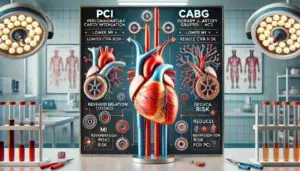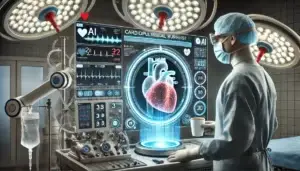
Comparing Percutaneous Coronary Intervention and Coronary Artery Bypass Grafting in Non-ST-Segment Elevation Acute Coronary Syndromes: A Systematic Review and Meta-Analysis
This systematic review and meta-analysis compared percutaneous coronary intervention (PCI) and coronary artery bypass grafting (CABG) for treating non-ST-segment elevation acute coronary syndromes (NSTE-ACS). Analyzing data from 15 studies with 48,891 patients, results showed no significant mortality difference between PCI and CABG. However, CABG reduced the risk of myocardial infarction (RR = 0.56) and repeat revascularization (RR = 2.94), while PCI was associated with a lower risk of cerebrovascular accidents (RR = 0.58). These findings emphasize individualized treatment strategies based on patient-specific risk profiles.



